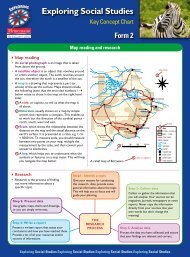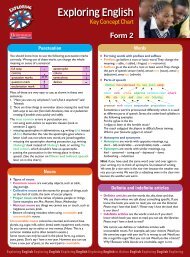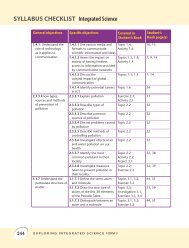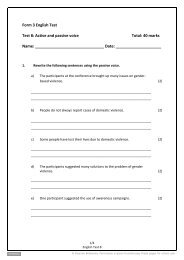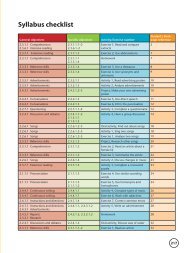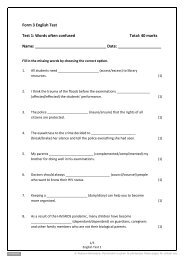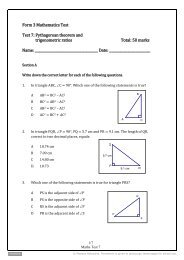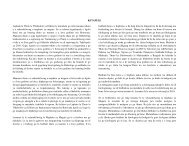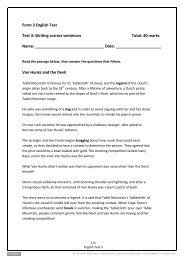Teacher's Guide - Pearson
Teacher's Guide - Pearson
Teacher's Guide - Pearson
- No tags were found...
Create successful ePaper yourself
Turn your PDF publications into a flip-book with our unique Google optimized e-Paper software.
Activity 14.1 (Student’s Book page 248)2. a) and b)c) Phako has stopped to look at a flower bush.d) 3 seconds.Activity 14.2 (Student’s Book page 249)1. a) (0;0) is at P, the starting point. It then moves away from P, stops at B (turningpoint/maximum point on curve) comes back towards P (displacementdecreases) until it goes past P (cuts time axis) in the opposite direction (belowtime axis) until it reaches D where it stops.b) Displacement is positive above the time axis (when the ball moves between Pand B) and negative below it (when the ball moves between P and D).c) Velocity positive from P to B and negative from B back to P through to D.Note: The velocity is zero at B since it is a turning point.d) At B and D.e) 3 m to the left of P.2. It travels upwards while it slows down uniformly until it stops (at B); it thencomes back at a uniform acceleration (under the influence of gravity) and movespast the point from where it was launched (at P) until it hits the floor (at D). No,the ball travels in a straight line that goes vertically upwards and then along thesame line vertically downwards until it reaches the floor. The graph is arepresentation of the displacement of the ball relative to the reference point (P).3. No. Displacement changes as time goes on and the horizontal axis is the timeaxis, so the graph is bound to 'follow the time' from left to right.Chapter 14: Travel graphs79





